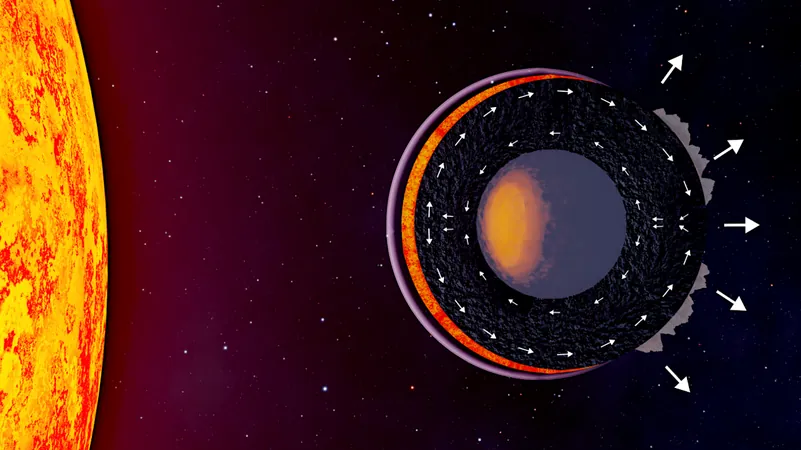
Unlocking the Secrets of Lava Planets: A Glimpse into Rocky Worlds' Hidden Histories
2025-08-14
Author: Olivia
Scientists Discover Lava Planets Hold Keys to Our Planet's Past
In a groundbreaking study published on July 29, 2025, in Nature Astronomy, a team of international researchers, spearheaded by scientists from the Institut de Physique du Globe de Paris (IPGP) alongside experts from Canada and the United Kingdom, has unveiled that 'lava planets'—exoplanets situated perilously close to their stars—offer invaluable insights into the internal dynamics and chemical evolution of rocky worlds.
What Are Lava Planets?
These exotic celestial bodies retain one hemisphere perpetually exposed to their star, becoming molten and incredibly hot—hot enough to melt rock. This unique positioning creates a natural laboratory that allows scientists to explore the thrilling interactions between the atmosphere, surface, and deep mantle.
A Dance of Elements: How Atmospheres Are Formed
The research emphasizes the significance of crystallization and differentiation events deep within these planets' mantles. Through innovative numerical simulations, the scientists identified two primary thermal scenarios determining the evolution of lava planets: 1. When a planet's interior is entirely molten, its atmosphere mirrors the planet's overall composition. The cooler, dark side of the planet remains in constant upheaval, reshaping itself continuously. 2. Conversely, if the core is mostly solid, with only a shallow layer of lava on the sunlit side, the atmosphere becomes deficient in volatile elements such as sodium, potassium, and iron.
Understanding Thermal States through Advanced Observations
As these lava planets cool, various minerals precipitate from the magma, changing the residual lava's composition as well as the surrounding atmosphere—a change that can be measured even from afar. Advanced instruments like the James Webb Space Telescope (JWST) are now able to assess temperatures on these planets' dark sides, providing crucial insights into their internal thermal states and offering a peek into their geological histories.
A Quantum Leap for Exoplanet Research
Excitingly, an international cohort of astronomers has been granted 100 hours of observation time on the JWST to validate the hypotheses set forth in this transformative study. Future observations, whether from ground-based telescopes or space, will allow for a deeper examination of these planets' atmospheric compositions, shedding light on the intricate dance between magma oceans and solid mantles.
Revolutionizing Our Understanding of Rocky Worlds
This research heralds a new era of integrated geophysical studies of rocky exoplanets. By merging interior modeling, atmospheric data, and thermal readings, scientists are equipped to trace the evolution of these worlds—from their formation to their present conditions. Lava planets, once dismissed as mere curiosities, are now emerging as critical keys to understanding not only their own mysterious histories but potentially that of Earth and other terrestrial planets.









 Brasil (PT)
Brasil (PT)
 Canada (EN)
Canada (EN)
 Chile (ES)
Chile (ES)
 Česko (CS)
Česko (CS)
 대한민국 (KO)
대한민국 (KO)
 España (ES)
España (ES)
 France (FR)
France (FR)
 Hong Kong (EN)
Hong Kong (EN)
 Italia (IT)
Italia (IT)
 日本 (JA)
日本 (JA)
 Magyarország (HU)
Magyarország (HU)
 Norge (NO)
Norge (NO)
 Polska (PL)
Polska (PL)
 Schweiz (DE)
Schweiz (DE)
 Singapore (EN)
Singapore (EN)
 Sverige (SV)
Sverige (SV)
 Suomi (FI)
Suomi (FI)
 Türkiye (TR)
Türkiye (TR)
 الإمارات العربية المتحدة (AR)
الإمارات العربية المتحدة (AR)